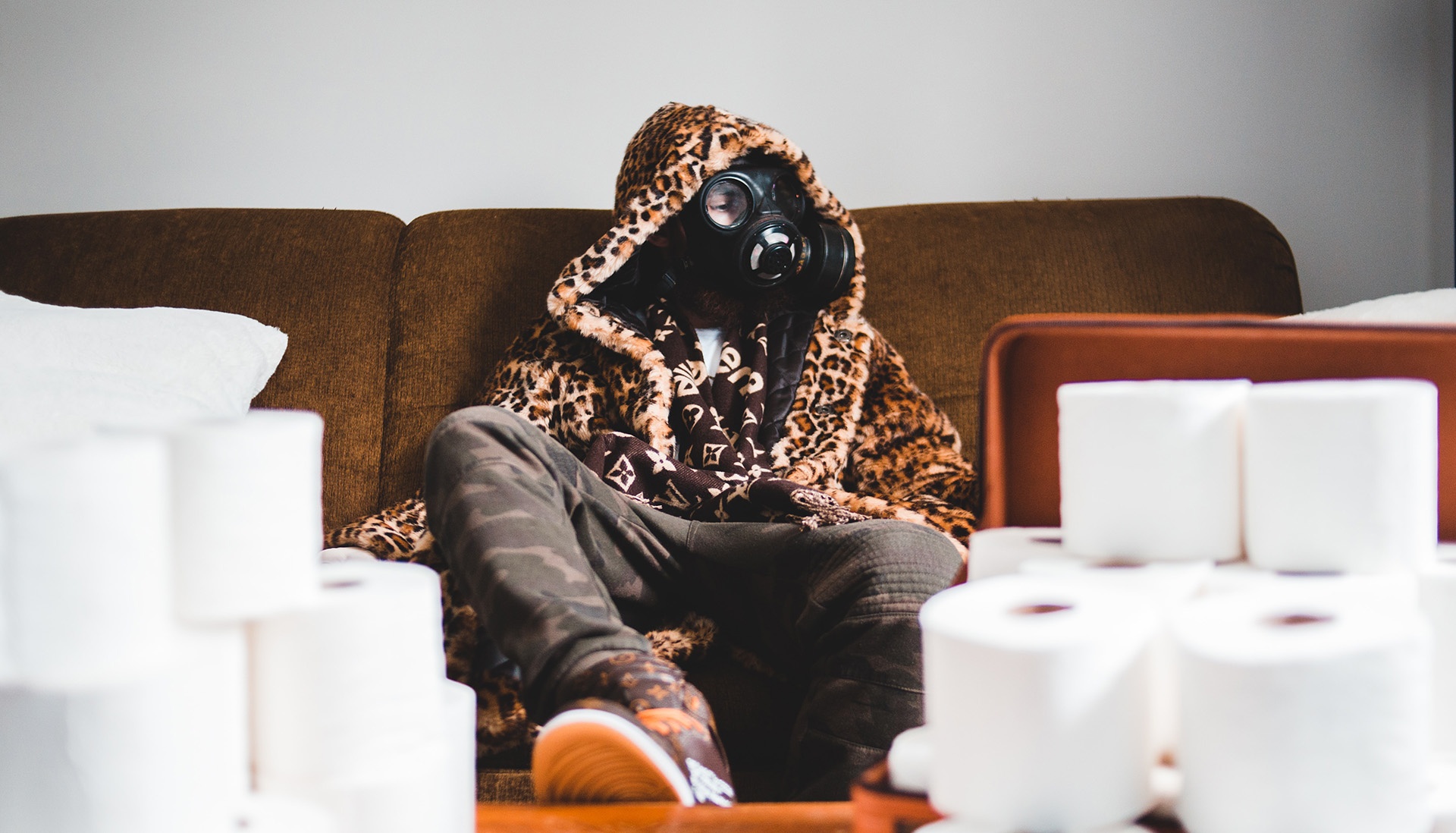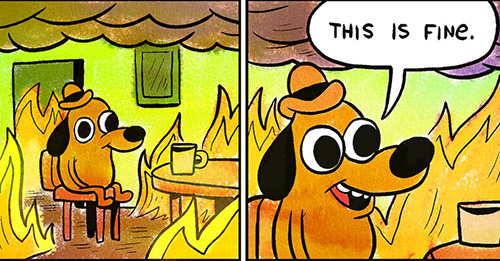9 minutes
Learnings from Lockdown

As the world has endured lockdown, the past few months (if not the year to date!) have been “odd” for many. I’m sure those of you reading might choose to replace that final adjective with other alternatives… Irrespective of your choice of words, 2020 for virtually everyone on the planet has been a defining year.
For the most part the focus has been on the negative. The day-to-day impact of lockdown. The countless personal tragedies. The impact on our health services. The long-term effects on the economy… I could go on. This past couple of weeks though I’ve found myself contemplating the things closer to home. The small victories. The many examples of initiative and hard work that have allowed things to continue with a sense of normality. The shift in the way people think and approach communication. There are many.
In spite of the horrific nature of COVID-19, things are happening around us that will continue to define the way we work and interact for years to come. There are also areas I’m sure many of us would admit we need to do better on in the future… a wake up call perhaps. Much of this is technology aligned and I’ve found it fascinating to see how the world has embraced a number of the services I love to talk about and work with, day in and day out.
I thought I’d take a moment to summarise some of the things I’ve noticed over these last 6-8 weeks (or is it 9-10… or 11-12… who knows anymore?!). Perhaps they resonate with you, perhaps they don’t. Either way I’m keen to hear your feedback. What are the positives you are looking to maintain following COVID? What things have you have noticed? What’s changed and is unlikely to revert post-lockdown?
Here goes…
Organisations & People Adapt
This is the biggie for me. As the lockdown became an inevitability many organisations were forced to consider the way they delivered services to their users with an initial sense of trepidation. Whilst technology sits at the heart of most modern businesses, for a significant portion this is (or at least was) in a very traditional way.
“Digital Transformation” is one of those phrases I have an instinctive negative reaction to (hear me out…!). It conjures up a vision of wholesale change, large expense, and for some represents an idealistic vision that seems unattainable. In practice this is rarely the case, but it’s become one of those phrases that often provokes a defensive response.

COVID-19 has changed that; forcing some lateral thinking and driving change based on the need to do something. In many cases it’s the fear of change as opposed to the cost or ability to effect it that prompts hesitation. Whilst I don’t want to typecast digital transformation (solely) as “remote working”, the modernisation of the user experience and flexibility that comes from adoption of cloud services is a huge part. The coronavirus pandemic and lockdown has acted as a significant catalyst.
In much the same way as organisations, people have also had to adapt. The illusion of a perfect working environment has been shattered; invaded by children, pets, and our often less than perfect desk setups. I’ve spent the last 7 weeks working from my kitchen table. It’s OK. Comfortable enough, and (now) equipped with a Surface Dock and decent monitor. It’s a far cry though from my setup at work, or the office I used to have upstairs… the one we decided just a few short months ago would be better served as a bedroom because “I hardly ever work from home anymore”(!).
The reality is that none of that has really mattered. Every other person I speak to has the same challenges, the same distractions. We’re all in the same boat. With that comes an acceptance that may not have been there had we not been challenged in quite the way we all have. A wholehearted positive in my opinion.
Video isn’t all that bad…
If you’re anything like me, in spite of having the tools at your fingertips the prospect of a video call used to be a daunting one. Of the many calls I participated in during a typical week only a small portion used to involve video. It wasn’t so much a novelty, just a feature that wasn’t relevant to most calling scenarios.
The importance of face to face communication has always been well understood. In a pre-lockdown world there was a fairly typical format to most customer engagements… preliminary interaction was nearly always by phone. Some fact finding. Some introductions. Any serious requirement though was nearly alway followed with an on-site meeting to discuss the detail. This felt like a necessity, enabling the free-flowing back and forth conversation that’s difficult to achieve on a call. As we’ve quickly come to rely on Teams, Zoom, and a plethora of others for our day to day communication, there’s been a marked relaxation towards the use of video to bridge this gap.
For me, video has become a default. Whether it’s a quick call to a colleague, or a more involved customer meeting my assumption now is that most attendees will have cameras enabled. Whilst I long for the day when I can go and visit customers in person once again, it’s hard to imagine us going back to a position where video doesn’t play a major part in the way we undertake business communications. It’s not the same (clearly!), but visual cues, the ability to easily interact with remote participants, and a broad level of acceptance / comfort will undoubtedly mean it’s used far more readily post-lockdown. That leaves aside the many other business benefits. Less time spent travelling. A reduction in expenses. The ease and speed with which we can interact and progress etc. It’s a no-brainer.
Video is very firmly here to stay.
Office Communication is Underrated
Notwithstanding the benefits of video and remote working, something I really miss is the hustle and bustle of an office environment and the working day… Countless small interactions played a large part in the way I managed my teams and the way I kept my finger on the pulse of what needed to be done. It’s amazing how much effort it takes to replicate that effectively when working remotely.
The danger of missing out on the incidental stuff is that you become a slave to meetings. Things that “just happen” in an office environment need to be instigated when you’re all apart. In practice this takes the form of calls. Lots of them. This is something I have had to (and am still learning to) manage more efficiently. Calls are rarely brief in spite of best intentions. It’s perfectly natural to want to catch up, to chat, and to try and make up for all of the “normal” things that we get up to when we’re in the office. The reality is that it’s nigh on impossible to replicate the passing comments in the kitchen, or overhearing a discussion and chipping in with some help…
I’ve struggled with this, and in truth I still do. I’ve found myself having to be far more selective about what I do and don’t get involved in - knowing full well that accepting every 30-60 minute call is self-defeating. I try to dedicate time each day to catching up with those in my team that isn’t focussed on anything other than making sure they are OK and have what they need. It’s not a perfect substitute, but it goes some way to making up for what we miss when we’re passing in the corridor or making a coffee. It ensures that more formal conversations we need to have during the day can be focussed and productive. That said, I’d trade it in a heartbeat to go back to the way things were.
BC / DR Plans aren’t Reviewed Frequently Enough
For many, the moment we entered lockdown was akin to a disaster. We often theorise on the scenarios that will trigger a BC / DR response. The usual “plane hitting the building”, or fire / flood type scenarios. The prospect of a mass event leaving offices perfectly functional but devoid of people however wasn’t high on many lists.

This was reflected in the way that some organisations found themselves having to respond. A mix of panic, chaos, hard work and in (most) cases… good fortune. I’ve made reference already to the way organisations and employee’s adapted. There’s an underlying point though that many weren’t prepared for what came along.
Obviously forecasting any and all DR-type scenarios isn’t possible. For me though there’s a broader principle here that needs to be noted for the future, focussed on architectural principles. We live in an age where most roles can be fulfilled remotely. There are obvious exceptions; manufacturing, hospitality, retail (etc.). In nearly all cases though there are examples of roles which can be made location agnostic with the right systems and infrastructure.
DR is about more than having a plan to recover systems. Indeed, with many systems now moving to SaaS the conversation is more about providing and maintaining access. This goes beyond basic conversations around laptops and a VPN. It extends to the way we manage devices, the way we securely access systems and data (Zero Trust anyone?!, and the processes and methods we use to manage employee communication and engagement.
Much like security, DR principles need to be built-in, not bolted-on. This is a lesson I think many have taken away from recent weeks. A “wake up call” sounds crass, but irrespective of your choice of words I suspect the focus on managing and maintaining BC / DR plans will shift as we move forwards.
Summary
The Cloud has defined business response in many cases. I’ve seen examples of work programs being accelerated, and lightbulb moments as the value cloud services can bring is realised in these oh-so-strange times.
This is slightly left-field of my usual posts (not to mention slightly longer) I appreciate. I feel though that COVID-19, and the resulting lockdown represent a watershed moment for our industry. I’ve been selective with my words in places. There are too many examples of organisations (and individuals) looking to capitalise on the pandemic with FUD and pressure-tactics. That isn’t my intention with this post. For me, there are some key learnings for us all. I want to recognise and learn from them.
There will be other examples many of you will have noted. I’d welcome some examples and some debate on my own thoughts. What have you seen? How will you learn from this period?